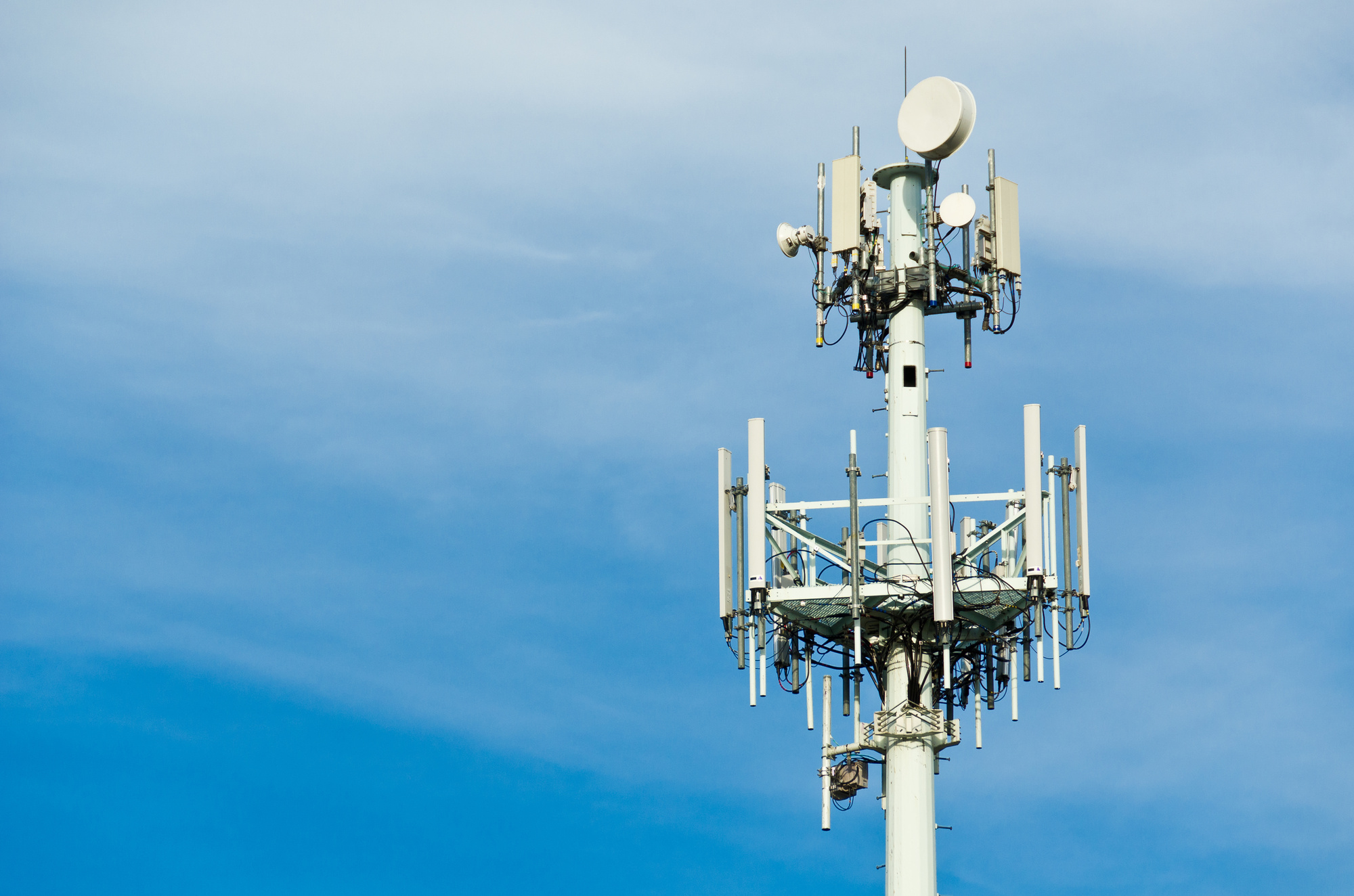+ Ryan Lott (of Son Lux) teaches how to build custom virtual instruments for sound design and scoring in Designing Sample-Based Instruments.
Musicians are all about sound. It’s only natural that we might get curious about how our cell phones actually transmit the audio being fed into them.
As one might suspect, the underlying concepts are not that different from the technology we use to record music with microphones, it’s just the aspect of wireless transmission that may feel new.
So let’ break down how cell phones transmit audio here (and we’ll keep it relatively simple, don’t worry).
Two Things Every Phone Does
Firstly, it’s helpful to remind ourselves how a phone works in general, including traditional landlines. At their most basic, phones are just a microphone, a speaker, and a wire.
Microphones convert sound waves into electrical signals via one of two basic methods: dynamic (i.e: moving coil and ribbons) and capacitor (i.e: condensers). In each case, air pressure created by sound waves moves a physical membrane of some kind, which changes capacitance (for capacitor mics) or the status of a magnetic field (for dynamic mics).
The membrane’s movements imprint a sonic impression into an electric signal, which is then converted back into sound on the other end of the signal path (whether a tape machine, a speaker, or a computer, etc.).
The same thing happens in any telephone.
In other words, there’s a mic in there. So that’s Step 1: Turn sound into an electrical signal.
Step 2: Send that signal to another phone and turn it back into sound. This means there’s a speaker in there too. Speakers work exactly like moving coil microphones, only in reverse. An electrical signal causes a change in a magnetic field which causes a membrane to move, moving air, making sound. In a traditional landline, that signal is simply carried over a wire, just like a mic signal is carried through a cable in the studio.
There’s a lot of detail we’re glossing over here, obviously — the main thing being that phones don’t sound as awesome as real mics in studios. This is simply because the amount of information in full-bandwidth audio was simply too much to send over long distances via olden-days wiring, with crappy little mics and speakers.
To get around this, telephones limit the bandwidth they send to the most important and audible part of the human voice — around 300 Hz to 3400 Hz. Hence the term “telephoning” your vocal.
Up to this point, cell phones actually work in exactly the same way; there’s a mic (either a tiny condenser or a MEMs microphone) and there’s a speaker. But obviously, they don’t transmit audio via wires, and that’s why you came here.
This is a photo of a cell tower.

How Cell Phones Transmit Audio
Let’s start with an overview of the basic steps:
- Voice (or other) sound is converted to an electrical signal (as described above).
- The signal is encoded into a frequency on the electromagnetic spectrum.
- That electromagnetic signal is transmitted to a cell tower.
- The cell tower sends the electromagnetic signal to the receiving phone.
- The receiving phone decodes the electromagnetic signal and turns it into sound with the tiny speaker.
The main thing to unpack here is what is meant by “electromagnetic signal.” One way to make sense of this is to say: your cell phone is just a gussied-up two-way radio. Just like any radio, the phone has antennae for transmitting and receiving radio waves.
Once the phone has some audio information to transmit, it applies an oscillating current to the antenna, which then emits electromagnetic waves. The other phone intercepts this electromagnetic wave, converting it back into an audio signal and finally into actual sound. This is referred to as two-way communication because the phone’s antennae can do both sending and receiving simultaneously.
Because cell phones operate in a different part of the electromagnetic spectrum than actual radios do, this is why we can have both. This is made doable by Step 3 above: The cell phone tower.
The predecessor to this technology was the old CB radio (or “citizen band radio”) system that truckers used to use. These proto-phones used central antennae located in various cities and towns; like cell towers only much less sophisticated.
The idea is the same — device A turns sound into an audio signal and then into electromagnetic waves, transmits that over the air to a large central tower which captures and amplifies it and sends it along, and device B receives the electromagnetic signal, turns it into audio, and then into sound.
Yes, This Is Also How Wireless Mics Work.
If you’re an audio geek, you’re probably wondering if this concept is how wireless mics, in-ear monitors, and wireless guitar rigs work.
Yep! There are only three differences. One is that wireless mics and similar systems use frequency modulation (FM as opposed to AM) and cell phones use other kinds of modulation (usually, this is complicated). The biggest difference is that wireless mics and similar are limited by FCC regulations to a short distance.
Because they’re capable of transmitting a much-wider audio bandwidth (i.e: instruments, voice, drums, full songs, etc.) this distance cutoff helps so that these signals don’t interfere with important infrastructural signals out in the world.
The third and final difference is since the range is so short, wireless music stuff doesn’t need a relay device like a tower. Signal simply transmits from transmitter to receiver directly. They link up by tuning to the same frequency, which is either in the VHF or UHF range (yes, UHF devices are better and more expensive).

That’s How Cell Phones Transmit Audio (Basically)
Cell phones and wireless communications are by no means simple, so, no, please don’t go try to teach a college level class on this stuff just yet. But these are the basics, and it’s still pretty cool!
For a deeper dive and a little history for context to boot, try this pretty awesome article on Medium. And carry on making calls and music!
Don’t stop here!
Continue learning with hundreds of lessons on songwriting, mixing, recording and production, composing, beat making, and more on Soundfly, with artist-led courses by Kimbra, Jlin, Kiefer, RJD2, Ryan Lott, and of course, Com Truise: Mid-Fi Synthwave Slow-Motion Funk.




